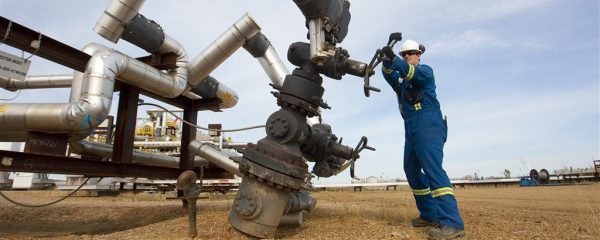Alberta oil sands economics much better than BC pipeline opponents allege
Oil sands costs down/productivity up, which drives higher volumes, increases need for new pipelines
When oil prices collapsed in late 2014, oil producers did what they always do in such circumstances: drove down costs in order to survive. Saudi Arabia, attempting to push American shale drillers from the market, under-estimated just how low non-OPEC companies could reduce costs. That includes Alberta oil sands firms, as IHS analyst Kevin Birn explained in a recent interview.
I’ll get to Birn in a moment. First I want to address the way in which oil sands economics have become a political issue in British Columbia, where Kinder Morgan opponents like economist Robyn Allan, a former ICBC CEO and prominent pipeline critic, argue that low oil prices will constrain oil sands production increases, meaning the Trans Mountain Expansion pipeline from Alberta to Burnaby, BC is not needed.
That argument is based on a flawed premise: that oil sands production costs remained static while prices dropped.
Allan is a darling of Vancouver environmentalists and her arguments are featured prominently in local media. I have never found a case – I’m sure there are some, but Google can’t find them – where BC media interviewed an actual energy economist or reputable analyst for another point of view on the data.
For instance, she took issue with the Canadian government’s decision to approve the Trans Mountain Expansion pipeline in a Sept. 24, 2016 letter to Natural Resources Minister Jim Carr:
Allan’s critique oil sands economics and the need for more Canadian pipelines deserves more time and attention in later columns, but I wanted to flag this issue because it promises to play a role in the BC election, just underway.
Below is my interview with Kevin Birn, director, Canadian Oil Sands Dialogue, North American Crude Oil Markets, for IHS Markit.
This interview has been lightly edited for clarity.
Markham: What’s your take on the recent purchases by Calgary-based companies Cenovus and CNRL of $32 billion of oil sands assets from foreign companies?
Birn: I think you’re seeing oil companies – not just in Canada but globally – pivoting toward their perceived specialties. In Canada, that means large Canadian companies pivoting towards the Alberta oil sands. This means more production is going to be controlled by companies headquartered in Canada. We had the top five producers in the oil sands controlling nearly two-thirds of production prior to these deals and now have over four-fifths.
Markham: The last time we talked you said that in the current low-price environment there would be almost no greenfield development, companies would be optimizing and expanding existing facilities (brownfield development). Is that still the case?
Birn: That is still our outlook. Producers develop the best reservoirs and then expand from that base. Producers spent the past 15 years developing that base and and now they’re going to build out from them because those are the lowest cost, quickest to production projects they’ve got. That’s what we see driving growth.
Markham: How do the CNRL and Cenovus deals tie into that trend?
Birn: There’s two ways to grow production. One, build it, which in the oil sands can take a long time. Two, buy flowing barrels. Both companies bought flowing barrels from existing faculties, which gives them another asset base to build from.
So, CNRL and Cenovus are employing both strategies at the same time and significantly growing production volumes.
Markham: What does this mean for the future of the oil sands?
Birn: Remember when we used that the world was running out of oil and the oil sands represented the last untapped source, a supply located in a politically and economically stable country like Canada? The world has changed. Mainly because the US has returned to growth in energy production, which really shattered our old view of the world.
For the oil sands to grow in the future and to continue to attract capital, producers are going to have to be more competitive than in the past. I think that’s already a reality, though the final chapter remains to be written.
Markham: From where I sit it seems industry is really beginning to grapple with both GHG emissions and high costs. I think we’ll see some significant progress in the next two to five years. What’s your take?
Birn: Since the price collapse in 2014 and 2015, we’ve seen costs come down in the oil sands. The biggest reduction has been supply costs. We’ve seen, in 2014, a typical SAGD (steam assisted gravity drainage) operation costs in Canadian dollars was about $15. Now it’s down to $10, about a 35% reduction. A lot of those reductions have come from improved efficiency. And with that efficiency has come more oil for less energy.
For example you’ve seen steam oil ratios collapse in the industry. As a result, emission-intensity has fallen, particularly in thermal [using natural gas to generate steam that dilutes the bitumen, which is the consistency of peanut butter].
You also see a pivot in the last few years in terms of the technology used in the oil sands. One new mining coming on stream soon uses paraffinic froth treatmen, which is lower intensity than other forms of mining because it doesn’t have the upgrading component associated with it.
These innovations will drive intensity-reduction in the industry and this is already underway. The fact that thee price collapsed focused producers’ attentions on costs ,which also aligns perfectly with carbon reductions, which is a good thing.
Markham: I interviewed an energy economist recently about cost reductions in American shale basins and he thinks 50% of cost reduction will be permanent because they are productivity increases and the other 50% producers will give back because service companies will demand higher rates. What’s your take on that for the oil sands?
Birn: It’s still too early to say. In terms of the cost deflation, you could argue a large chunk of that comes from service sector cost deflation and in currency and all that stuff – that’s important and that’s driven cost reduction,
The other bit is how to build a better operation – a cheaper plant, remove steel, build it quicker, drill wells longer, etc. Those are sustainable costs. You’re just starting those the implications of those cost reductions. Those are more structural and they are very promising. But we’re not sure if we’ve seen the full extent of the structural cost reductions from the industry.
To your question, we think cost deflation may be bottoming out in the oil sands because of increased activity in the United States. That can affect drilling rates, that can affect labour, all those things can transfer across the border.









